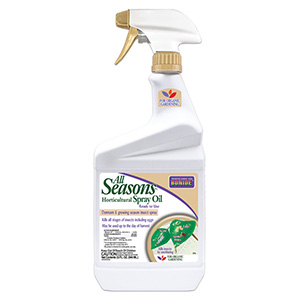Vine Mealybug
Planococcus ficus
The vine mealybug (VMB) is a severe economic pest in grape-growing regions of California as well as parts of South America, the Mediterranean and its surrounding areas. It has become a primary concern in northern San Joaquin Valley vineyards due to crop losses caused by vine mealybug feeding and diseases it vectors like Grapevine Leafroll and other related viruses. Vine mealybugs are found year round on the vine and can have up to 7 generations in a single year. As they feed, they produce copious amounts of honeydew which encourages mildew growth and leaves fruit unmarketable.
Vine Mealybugs can be found under bark and in cracks on the lower trunk during winter months. When present, the bark will appear dark and wet due to honeydew buildup. Once warmer temperatures set in, mealybug numbers increase and disperse onto foliage and fruit where they feed and reproduce from late spring through early fall. Since female vine mealybugs cannot fly, they are mainly spread by humans, equipment or birds.
Controlling Vine Mealybugs: Identification is important and should be done successfully prior to choosing a treatment. Successful control of vine mealybugs is dependent on early identification and limiting the spread of the infestation. Successfully doing so minimizes the affected areas and reduces pest control treatment needs.
- Trapping & monitoring can be done with plastic delta traps using specific sex pheromone lures. This is an effective way to sample vine mealybug populations and determine when control is needed.
- Remove fallen leaves and plant matter in infested areas to reduce habitat. Do not take cuttings from infested areas.
- Thoroughly sanitize all equipment that has been used in infested vineyards. OxiDate 2.0 works well to sterilize surfaces and avoid disease or pest transmission.
- Mating disruption using highly concentrated pheromone lures should be started early in the season. These pheromones disorient male vine mealybugs, preventing them from locating females.
- The mealybug parasite, Anagyrus pseudococci, has shown positive results released in San Joaquin Valley vineyards when ants are not present. They should be released early in the season to maximize control. Since they remain active late into the growing season, A. pseudococci can greatly reduce vine mealybug populations prior to their movement to the lower part of the trunk where beneficials and sprays have much less effect.
- Cryptolaemus montrouzieri (mealybug predators) are effective when used with A. pseudococci mealybug parasites, preferring to feed on vine mealybug eggs and immature stages. Begin releases in early spring as soon as mealybug eggs are present.
-
-
$77.00–$1,200.00
-
-
$750.00–$2,700.00
-
$31.49–$58.79
-
$10.99–$32.49
$6.00–$32.49 -
$38.50–$4,350.00
-
$230.00–$340.00
-
$35.00–$285.00
-
$21.50
-
$14.85–$26.99














